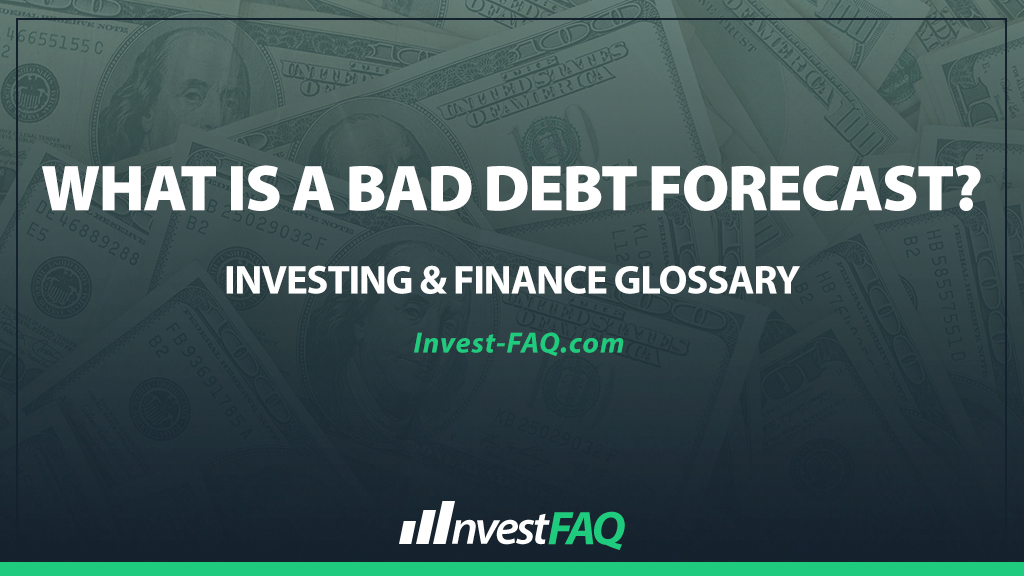Contents
Bad Debt Forecast
A bad debt forecast is an estimation of the amount of accounts receivable that a company does not expect to collect from its debtors. This financial projection is crucial for businesses to anticipate potential losses from uncollectible accounts, aiding in more accurate financial planning and risk management.
In the realm of business, a bad debt forecast serves as a proactive measure to safeguard a company’s financial health.
By estimating the amount of receivables likely to become uncollectible, businesses can set aside appropriate allowances for bad debts, ensuring that financial statements reflect a more accurate picture of the company’s net income and financial position.
This forecast also informs credit policies, helping businesses decide when to tighten credit terms or pursue more aggressive collection efforts.
Example of Bad Debt Forecast
Imagine Tech Innovations Inc., a company that sells software solutions, forecasts a 5% bad debt rate based on historical data and current economic conditions. With outstanding receivables of $500,000 for the fiscal year, the company anticipates $25,000 in bad debts.
In accounting terms, Tech Innovations would make the following journal entry at the end of the fiscal year to account for the forecasted bad debt:
Debit Bad Debt Expense: $25,000
Credit Allowance for Doubtful Accounts: $25,000
This entry increases the bad debt expense, reducing net income, and also increases the allowance for doubtful accounts, a contra-asset account that reduces total accounts receivable.
This example demonstrates the accounting mechanism used to reflect the anticipated impact of bad debts on a company’s financials. The bad debt expense recognized in the income statement captures the cost of uncollectible receivables, directly affecting profitability.
Simultaneously, the allowance for doubtful accounts adjusts the gross accounts receivable on the balance sheet to its net realizable value, providing a more realistic view of the assets expected to be converted into cash. This dual adjustment ensures that stakeholders have a clear and accurate understanding of the company’s financial status and risks.
Significance for Investing & Finance
The concept of a bad debt forecast is significant in accounting for several reasons:
Accuracy in Financial Reporting: It ensures that financial statements accurately represent the company’s financial position by accounting for the realistic value of receivables.
Risk Management: By anticipating potential losses from bad debts, companies can take proactive measures to manage credit risk and minimize financial impact.
Strategic Decision Making: A bad debt forecast informs strategic decisions related to credit policies, collections strategies, and financial planning, contributing to overall business sustainability.
In summary, a bad debt forecast is an essential tool in the accounting and financial management toolkit. It allows businesses to anticipate and prepare for the impact of uncollectible receivables, ensuring that financial planning, risk management, and reporting practices are grounded in a realistic assessment of the company’s assets and income.
FAQ
How does a bad debt forecast benefit a company’s financial planning?
A bad debt forecast helps a company anticipate potential losses from uncollectible accounts, enabling more accurate budgeting and financial planning by setting realistic expectations for cash flow and net income.
What factors influence the accuracy of a bad debt forecast?
The accuracy of a bad debt forecast is influenced by historical collection data, current economic conditions, changes in customer payment behaviors, and the company’s credit policies, requiring regular review and adjustment to reflect the latest information.
Can a bad debt forecast impact a company’s credit policy?
Yes, insights from a bad debt forecast can lead a company to adjust its credit policies, tightening or loosening credit terms based on anticipated risks to minimize future uncollectible receivables.
How often should a company update its bad debt forecast?
A company should regularly update its bad debt forecast, ideally quarterly or more frequently if facing volatile market conditions or significant changes in customer payment practices, to ensure it accurately reflects the current risk environment.

